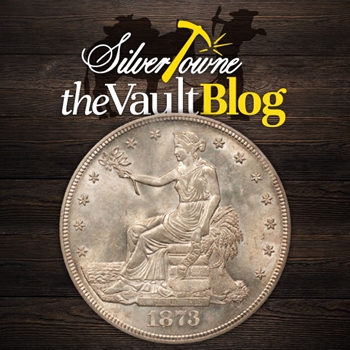
“It’s all in the family.” We know how that goes here at SilverTowne as our family-owned and operated business has been comprised of aunts, uncles, cousins, fathers, mothers, sons, daughters, grandfathers, grandmothers, and more throughout its beginnings in 1949. The coin business is a business that gets passed down from generation to generation in most cases, so it makes sense.
While our family tree features a lot more branches, there is a father and son duo in numismatics that has made quite the impact when it comes to United States coinage: William and Charles Barber. While we have already taken the time to talk about Charles’ impact on numismatics as the sixth Chief Engraver of the United States Mint, let us talk about his influencer and father that came before him as the fifth chief engraver.
William Barber’s Early Years
Born in London, England, on May 2, 1807, William Barber came from a family that was skilled in designing and engraving medals. Namely, his father John Barber was from whom he learned the art. William would go on to be skilled and trained in die engraving as well as the manufacturing of silverware. As a family man with a wife and two children, he decided to move everyone to the United States for better opportunities and landed in New England.
Barber Working at the Mint
While working as an engraver in both Boston and Providence, Barber caught the attention of the then-Chief Engraver James B. Longacre. By 1865, he was hired as an assistant engraver at the Mint and became directly involved with designing and engraving medals along with sinking coinage dies. After Longacre passed on January 1st of 1869, Barber was appointed by President Andrew Johnson to become the fifth Chief Engraver of the United States.
Barber’s best work while at the Mint was perhaps represented when it came to the well-known and visibly appealing designs on both the 1872 pattern and the half union $50 gold patterns in 1877. When it comes to circulating coins however, William was best known for his Trade dollar design inspired by the Liberty Seated series. He also designed a number of patterns to use for the twenty-cent piece as he believed it was to look completely different from the Liberty Seated quarter to make sure there was no chance of confusion. He was overruled at the end though as the Mint Director would choose a design that Barber would end up having to engrave. The denomination did not last long though as it was minted from 1875-1878.
William Barber’s medal work was what really gave him notoriety as he was responsible for engraving the Lincoln “Broken Column” medal that remembered the assassination of President Abraham Lincoln, the Centennial medal for the 1876 United States International Exposition in Philadelphia, and the Pacific Railroad medal in 1869 symbolizing the completion of the transcontinental railroad. With sketches of an 1877 quarter, he also designed what would have been the first commemorative coin but the idea never made it past the sketch phase.
In August of 1879, William Barber returned to Philadelphia from vacation where he fell ill. He later died on August 31st and his son was then appointed to the chief engraver position by President Rutherford B. Hayes. Among his peers at the Mint, Barber was well respected and well-liked. He was a major influence, along with fellow Chief Engraver Christian Gobrecht, over the Liberty Seated designs which are still collected and studied in today’s numismatic field.







